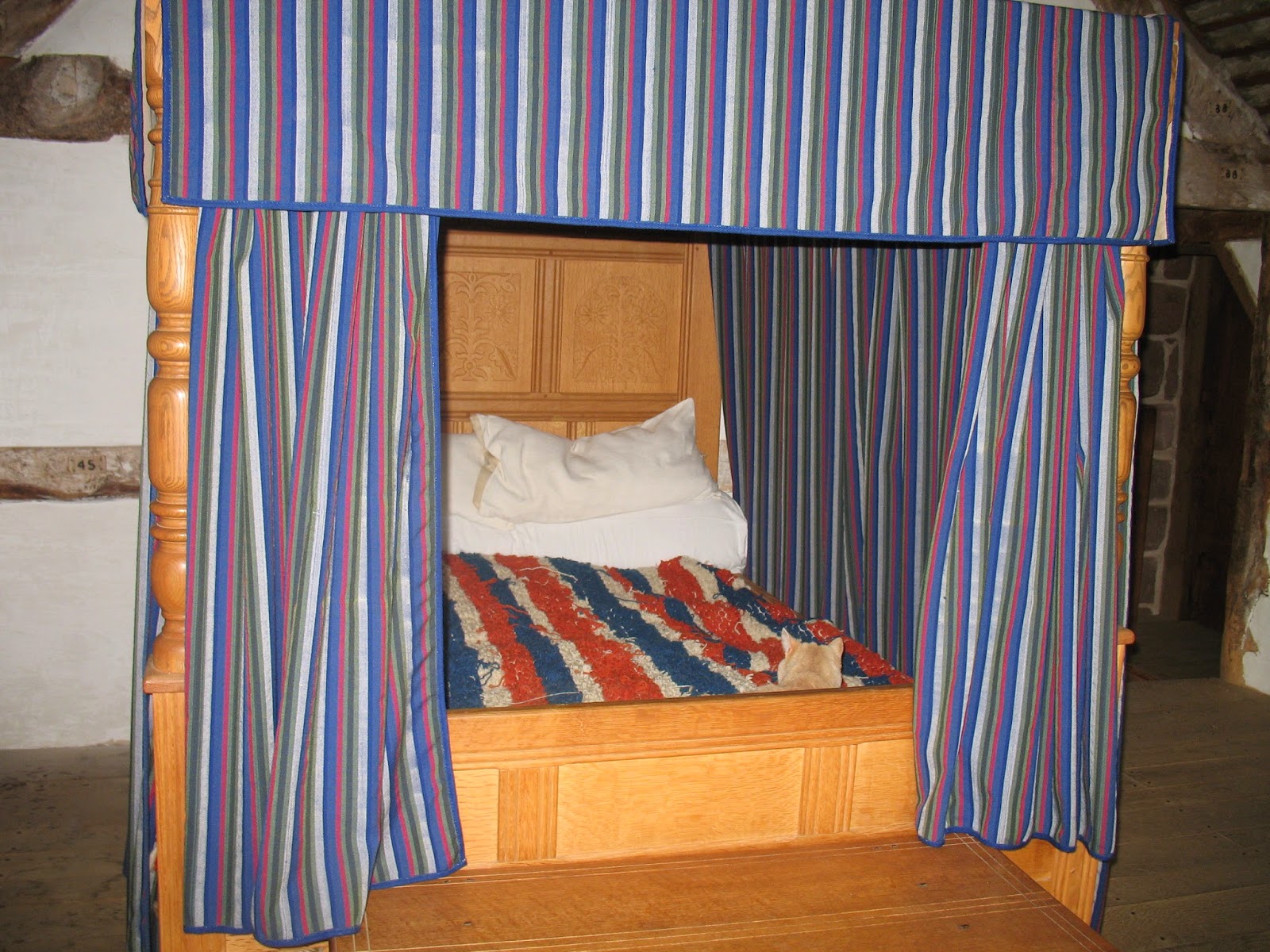We are living history fans, so when we were near the Frontier Culture Museum we decided we must stop to see what they were doing...rather a busman's holiday. It seems like most living history museums choose a period or area to portray. The Frontier Culture Museum shows farm life in the Shenandoah Valley in the frontier time period. The premise of the museum is that the valley is a place where much of American culture was born. It was settled by farmers from England, Ireland (Scots-Irish) and Germany. They started with a short film narrated by David McCulloch, a well-known historical writer. He showed the reasons people left these areas to settle in Virginia and how their farming ways influenced how Americans eventually farmed.
At the time we visited, German, English and Irish farms were portrayed with exhibits on African-American and Native American farming practices under construction but not yet open. In order to be accurate they went to England, Germany and Ireland to find period appropriate farmhouses from the 1600-1700s which could be purchased. Once suitable houses were found, they were numbered and dismantled so they could be reassembled on the site of the museum.
The weekend we visited, they were showing cloth production.
We first visited the English farm where they were washing wool to prepare it for spinning. The house was a half-timbered sort of building also called a daub and wattle building. As one acquaintance would have said, "It's so pastoral!"
This picture, taken from the inside shows what the walls look like between the timbers before it is plastered or covered with clay. Branches are woven between pieces of wood to fill in the space. This is the daub and wattle.
Bed curtains were used both for warmth and for privacy.
Our guide offered a pretend dinner party in the dining room, using the plates, etc there.
Next we visited the Irish farm with its rock walls.
This is where they were preparing flax for spinning. The portion of the flax that is used is a fiber inside a woody stem, so this lady is using a flax brake to crush and break up the woody parts to gain access to the fibers inside. The usable flax looks like blond hair when properly prepared. A hunk of prepared flax is called a 'tow'. This is where we get the term tow head for a blond haired child. Sometimes such a hair color is also called 'flaxen haired'.
The next site we visited was the German farm where they were spinning the flax. When flax is spun, the fabric is called linen. It was common on the frontier to make a sturdy fabric called linsey-woolsey which was a combination of linen and wool.
The kitchen had a raised hearth which seemed much less back breaking to me.
After the spinning was done, weaving was done in a sunny room.
The German farm interpreter had on a laced bodice over a chemise. One of the men in the group kept nattering about it...wondering about it. She nicely and tactfully told him several times that is was sort of like an under garment but was worn over the chemise and had boning in it. The man just would not quit with the questions until finally his wife poked him and said, "It's like a bra!" Then he shut up.
The last stop was the America farm which combined features and practices from all the other sites which were found to work best on that part of the American frontier.
It was an enjoyable trip and we learned a lot.

















No comments:
Post a Comment